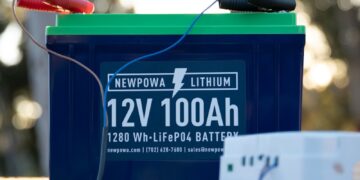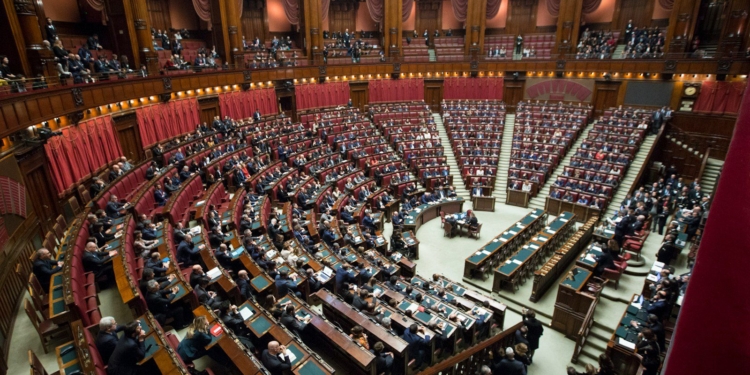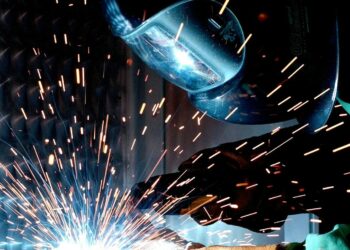| EcoBusinessNews
Solar Power and the Big Bill: A Comprehensive Guide for Businesses
Published: June 6, 2025 | EcoBusinessNews
The One Big Beautiful Bill Act (OBBBA), passed by the U.S. House on May 22, 2025, with a tight 215–214 vote, is set to reshape the clean energy landscape. If signed into law by July 2025, this bill will transform how businesses access a tax break that makes solar panels affordable, introducing strict deadlines, new rules on where solar parts come from, and a plan to shrink the tax break over time. For solar companies, installers, developers, and their customers, the OBBBA brings a mix of challenges and opportunities, requiring quick action, smart planning, and strong advocacy to keep sales strong and secure financial benefits. This in-depth guide explores the bill’s impacts on commercial solar sales, offers practical strategies to navigate its rules, and provides detailed steps to influence its final form, empowering businesses to succeed in this critical moment for clean energy.
Understanding the OBBBA: What’s Changing?
The OBBBA targets the solar tax break, officially called the Investment Tax Credit (ITC) under Section 48E, which lets businesses deduct 30% of the cost of installing solar systems from their federal taxes. The bill introduces four key changes that will redefine the commercial solar market:
- 60-Day Construction Start Deadline: Businesses must start building solar projects within 60 days of the law’s enactment, likely around September 2025 if passed in July, to qualify for the full 30% tax break. This tight timeline is like a race to catch a bus before it leaves.
- 2028 Placed-in-Service Deadline: Projects must be fully operational and connected to the grid by December 31, 2028, to get the full tax break. This deadline sets a hard finish line for projects.
- U.S. Parts Rules: The bill bans solar parts from certain countries, like China, which makes about 80% of global panels. Businesses must use parts from the U.S. or allies like Canada or Mexico, which may raise costs but supports local workers.
- Tax Break Phasedown: Starting in 2029, the tax break shrinks: 80% of the full credit in 2029 (24%), 60% in 2030 (18%), 40% in 2031 (12%), and 0% in 2032. This pushes businesses to act fast to save the most money.
These rules, part of the bill’s goal to streamline energy policy, make the OBBBA a double-edged sword. It sparks action now but could slow solar growth later if not managed well. Let’s dive into how these changes affect solar sales and what businesses can do to thrive.
How the Big Bill Affects Commercial Solar Sales
The OBBBA’s rules will shake up the commercial solar market, creating opportunities, challenges, and uncertainties. Below is a detailed look at 10 key impacts, based on industry data, web and X insights as of June 6, 2025, and economic analysis.
1. Sales Boom in 2025, But Uncertainty Later
The 60-day start and 2028 finish deadlines will spark a huge sales surge in late 2025 as businesses rush to lock in the 30% tax break. The Solar Energy Industries Association (SEIA) predicts a 20–30% jump in commercial solar installations, especially for projects under 1 megawatt (MW) that can be built in 12–18 months. In 2024, U.S. commercial solar grew 12%, hitting 10.5 gigawatts (GW). The OBBBA could push 2025 to 12.5–15 GW, like a Black Friday rush for tax savings.
Smaller projects, like a 500-kilowatt rooftop system for a grocery store, can meet the 2025 deadline easily, boosting sales for installers. Sales teams will see more inquiries from businesses like schools or warehouses, signing contracts by Q3 2025 to start on time. This surge will fill order books and create a busy year for solar companies.
But this boom won’t last. Projects missing the 60-day start lose the tax break, which could slow sales in 2026 and beyond. Big projects needing 1–2 years for permits or grid hookups, like a 10-megawatt system for a factory, risk cancellation. SEIA warns the bill could cut clean energy growth by 57–72% over 10 years, threatening 250,000 jobs and $161 billion in investments since 2022’s clean energy law. Businesses must cash in on 2025 but prepare for a quieter future.
This uncertainty could also make customers nervous. Some may delay projects after 2025, fearing more rule changes. Sales teams need to stress solar’s long-term benefits, like lower energy bills and green credentials, to keep interest high.
2. Higher Costs from U.S. Parts Rules
The bill’s ban on parts from countries like China will raise project costs by 15–25%. For a $1.5 million project, that’s an extra $225,000–$375,000, hitting sectors like retail, hotels, or factories hard. It’s like choosing premium ingredients for a recipe—better, but pricier.
Why the cost hike? U.S. parts, like First Solar’s panels, cost 10–20% more than Chinese ones due to higher wages and production costs. Shortages of U.S.-made inverters or racks also drive prices up—only 30% of 2024’s inverter demand was met domestically. Plus, checking part origins adds paperwork costs, maybe needing new staff or software.
These costs could scare off budget-conscious clients. A 300-kilowatt system for a community center, budgeted at $450,000, might jump to $540,000, leading to delays or smaller projects. Sales teams must show how the tax break helps: a $540,000 project saves $162,000 if done by 2028, keeping solar affordable.
The good news? The rules boost U.S. companies like First Solar, now making 14 GW of panels yearly, or Canadian firms like Silfab Solar. Early adopters of U.S. parts can win customers by marketing “Made in America” systems, appealing to clients who value local sourcing. For example, an installer using First Solar’s panels can pitch patriotism and compliance, gaining an edge.
But shortages are a risk. A 1-megawatt project needing 50 inverters could face a 3–6 month delay if suppliers are swamped. Businesses must stock up early, signing multi-year deals to secure parts for 2025’s rush.
3. Tax Break Shrinks, Squeezing Sales
Starting in 2029, the tax break drops: 80% in 2029 (24%), 60% in 2030 (18%), 40% in 2031 (12%), and gone in 2032. This pushes businesses to act before 2028. A $2 million project saves $600,000 in 2028, but only $480,000 in 2029, $360,000 in 2030, and $240,000 in 2031. By 2032, without the tax break, solar may lose appeal compared to wind, batteries, or fossil fuels in some areas, cutting sales.
This is like a countdown timer, urging quick action but worrying customers about projects past 2028. A warehouse owner might rush a 1-megawatt system to 2027 for max savings, while a university planning a 5-megawatt array in 2030 might rethink it. Sales teams need ROI tools to show why acting now pays off.
The phasedown also risks slowing solar’s growth. If solar becomes pricier than alternatives, businesses may choose other energy options, shrinking market share. Companies must highlight solar’s non-financial benefits, like sustainability, to keep customers committed.
4. Smaller Projects Win Out
The 60-day start and 2028 finish favor small projects, like 200-kilowatt to 1-megawatt systems, which can be done in 12–18 months. Businesses, schools, warehouses, and community centers will drive demand, as their projects fit the timeline. A 300-kilowatt system for a school can be permitted and built in a year, perfect for the tax break.
Big projects, like 10-megawatt systems, often face delays from permits or grid hookups—40% of 2024’s big projects were delayed over a year, per SEIA. These may miss 2028, leading to cancellations. Sales teams should target cities like Los Angeles or Austin, where approvals are faster, to focus on smaller, doable projects.
This shift could change how companies operate. Firms used to big projects may need to retrain staff or hire for smaller, urban jobs. It also opens doors for new players specializing in quick installations, shaking up the market.
5. Funding Gets Harder
The bill lets businesses sell the tax break for cash, but new rules make it trickier. Some credits, like for geothermal, stop being sellable after two years, and U.S. parts rules add risks. Investors may back off, making it tough for small companies to get money. The tax break market could shrink by 10–15%, hitting firms reliant on outside funds.
For example, a small installer building a 750-kilowatt system for a store might struggle to sell the tax break if investors worry about compliance. Big firms with bank ties, like NextEra Energy, are better off. Smaller companies need new funding options, like green bonds or state loans, to keep projects moving.
This could slow project pipelines, especially for firms without cash reserves. Companies must diversify funding sources and build investor trust by proving compliance with clear records.
6. Different Impacts by State
The bill’s effects vary by region. States like California and Texas, with strong solar markets, may keep growing thanks to local rules and sunny weather. California led with 40% of 2024’s U.S. solar installations, helped by net metering. Texas’s open energy market draws big corporate buyers.
But rural or Republican-leaning states, where 81% of clean energy investments went since 2022, could see bigger drops if locals resist solar. X posts from May 2025 show job loss fears in states like West Virginia or Oklahoma, where fossil fuel jobs compete. A 2-megawatt project in a rural GOP area might face pushback, delaying permits and missing deadlines. Companies need to pitch local benefits, like jobs or cheaper power, to win support.
7. Workers and Supplies Under Pressure
The 2025 sales rush will strain workers and supplies. The U.S. solar industry had 263,000 workers in 2024. Meeting demand could mean hiring 50,000–75,000 more, raising labor costs by 10–20%. Training programs, like those in California or North Carolina, are key, but fast growth risks mistakes or burnout.
Supply shortages, especially for U.S.-made inverters or batteries, are a big concern—only 20–30% of 2024’s demand was met domestically. A 1-megawatt project needing $500,000 in racks could stall without early orders. Companies must plan ahead, securing parts by Q2 2025.
8. Economic and Environmental Stakes
The tax break has driven $161 billion in investments and cut millions of tons of CO2 yearly. A 1-megawatt system reduces 1,400 tons of emissions annually, like taking 300 cars off the road. The bill’s phasedown could slow this, increasing fossil fuel use in some areas.
Economically, solar supports manufacturing, construction, and finance. The U.S. parts rules could add 50,000–100,000 manufacturing jobs by 2030, but only if supplies grow. A post-2028 sales drop could cut installation jobs, which make up 60% of the sector. Businesses must push for policies balancing growth and stability.
9. New Competition
The bill favors big, integrated firms like SunPower, with their own manufacturing and funding. Smaller firms reliant on cheap imports or loans face risks. Partnerships with U.S. makers or green banks are vital for small players to compete.
The bill may also spark innovation in batteries or microgrids, as businesses pair solar with storage for reliability. A 1-megawatt system with a 500-kilowatt-hour battery appeals to hospitals or data centers. Sales teams should pitch these combos to stand out.
10. Changing Customer Views
Cost-conscious clients, like small businesses, may hesitate if savings drop post-2028. Big firms like Walmart, with green goals, may rush projects to meet ESG targets. Sales teams must tailor pitches: urgency for small clients, long-term value for corporates.
If delays or cost hikes from the bill hit headlines, trust in solar’s affordability could dip. Companies need success stories, like a school saving $450,000 with a 1-megawatt system, to keep confidence high.
Smart Strategies to Succeed
To thrive under the OBBBA, solar businesses need fast, creative plans. Here are seven detailed strategies to secure the tax break and keep sales strong:
- Speed Up Projects
Meet the 60-day start deadline by focusing on ready-to-go projects. Use tools like Smartsheet to plan design to grid hookup. Offer all-in-one deals covering everything, cutting time to 6–8 weeks. Work with utilities to speed approvals by 20–30%. For a 750-kilowatt school project, get permits by June 2025, order parts by July, and start by September 1. Train staff on lean building methods to stay on budget and avoid delays. - Lock in the Tax Break Early
Spend 5% of project costs on parts before the 60-day deadline to secure the tax break. Offer loans or leasing to help clients pay upfront. Keep receipts and contracts to prove eligibility—it’s like booking a concert ticket early. For a $2 million project, spend $100,000 on U.S.-made inverters by August 2025. Work with tax experts to ensure IRS compliance, especially for big projects. - Use U.S. or Allied Parts
Switch to parts from the U.S., Canada, or Mexico. Sign long-term deals with First Solar or Silfab Solar. Use Sourcemap to check part origins. Swap Chinese panels for First Solar’s Ohio-made ones by fall 2025. Negotiate bulk discounts and keep a 6-month stock to avoid shortages. U.S. manufacturing grew 71% from 2022 to 2024—jump on this trend! - Target Quick Customers
Focus on midsize clients like offices or schools that can build systems in 12–18 months. Show a $1.5 million system saves $450,000 by 2028, versus $360,000 in 2029. Offer flexible designs to fit budgets. Pitch a 500-kilowatt system to a college, showing a 6-year payoff. Research high-growth sectors like healthcare to find eager buyers. - Educate Customers
Show clients why acting now saves money. Build a tool showing a $1 million project saves $300,000 in 2028 but $120,000 in 2031. Host webinars with SEIA experts, recording them for later. Start a “Solar Sprint” campaign with X countdowns. A viral post on savings could boost inquiries by 20–30%. Write local op-eds to build trust. - Find New Funding
Offer power purchase agreements (PPAs) where clients pay over time. Partner with green banks or investors to fund projects. For a 1-megawatt warehouse system, offer a no-down PPA, letting them pay via savings while you claim the tax break. Tap state programs, like California’s SGIP, for extra funds. Build investor confidence with clear compliance records. - Track Senate Changes
The Senate may tweak the bill. Follow updates on SEIA or Congress.gov. Join the SEMA Coalition to push for longer tax breaks. X posts from May 2025 show senators like Lisa Murkowski supporting clean energy jobs, hinting at softer rules. Attend SEIA’s RE+ event to plan advocacy.
How to Shape the Big Bill
To make the OBBBA better for solar, businesses must act before July 2025. Here are five advocacy steps:
- Contact Senators
Reach out to senators like Shelley Moore Capito or Angus King, who back clean energy. Use SEIA’s templates to highlight 300,000 jobs and $161 billion in investments since 2022. Share a 2-megawatt project in their state that added 25 jobs and saved $600,000. Meet them in July 2025 to build support. - Join Groups
Team up with SEIA or ACORE to push for a 10-year tax break or slower cuts. Attend ACORE’s June 2025 summit or SEIA’s RE+ event. Sign a group letter to the Senate Energy Committee for solar-friendly rules. - Rally Communities
Get customers, workers, and locals to call senators using SEIA’s “Defend American Energy” scripts. Share that 77% of Americans support clean energy, per Pew Research. Start a #KeepSolarStrong X campaign, posting stories like a 1-megawatt system cutting 1,400 tons of emissions yearly. Offer email templates for local impact. - Use Facts
Tell lawmakers 81% of clean energy investments went to GOP states. Warn that ending the tax break could close 300 U.S. solar factories. Show a 1.5-megawatt system in a GOP state created 20 jobs and $450,000 in savings. - Plan for the Law
If the bill passes, train sales teams on deadlines and parts rules. Sign contracts to start by September 2025. Use Gantt charts to hit the 60-day mark. For a 1-megawatt project, get permits by July 15 and order $50,000 in racks by August 1.
Looking Ahead: A Bright Future
The OBBBA brings tough challenges—tight deadlines, higher costs, and funding hurdles—but also chances to lead in 2025’s sales rush. By speeding up projects, locking in tax breaks, using U.S. parts, and targeting quick customers, businesses can thrive. Advocacy is key, as Senate changes could keep the tax break strong.
SEIA’s Abigail Ross Hopper says, “Solar fuels America’s economy and future.” By acting fast and working with lawmakers, the solar industry can keep driving jobs, innovation, and a cleaner world.
Disclaimer: This reflects the OBBBA’s rules as of May 22, 2025, and may change. Check with legal, tax, and policy experts.
Solar Power and the Big Bill: Explained Like You’re a Kid
Published: June 6, 2025 | EcoBusinessNews
Imagine solar panels are like giant sun-powered batteries that help schools, shops, and offices save money on electricity. A new rule called the One Big Beautiful Bill Act (Big Bill) might change how businesses get these panels. It passed the House in May 2025 and could be a law by July. Here’s a super easy explanation, like telling a kid, with lots of fun details to make it clear!
What Is the Big Bill?
The Big Bill makes it trickier to get a discount that makes solar panels cheaper. This discount is like a coupon that saves businesses money when they buy panels. The bill has four big rules that change how this coupon works, and they’re like a game with a timer and special instructions.
- Hurry Up and Start: If the bill becomes law, businesses have to start building their solar panels in just 60 days—about two months. It’s like hearing a bell ring and running to start a race, or you miss out on a prize!
- Finish by 2028: The panels need to be working by December 31, 2028, to get the full discount. It’s like finishing a puzzle before the clock stops to win a trophy.
- Use U.S. Parts: The bill says panels can’t use parts from some countries, like China. It’s like only using American crayons to draw a picture. It might cost more, but it helps U.S. workers who make those crayons.
- Smaller Discount Later: After 2028, the discount gets smaller each year until it’s gone in 2032. It’s like getting fewer candies each Halloween—businesses want the big discount now!
These rules mean businesses will race to build panels in 2025, like trying to catch the last bus home. But after that, some might slow down because the discount shrinks, and panels could cost more. Let’s explore what this means and how people can keep solar shining bright!
Why Does This Matter?
Solar panels are super cool because they use the sun’s power to make electricity without polluting the air. They help schools save money for books, shops keep prices low, and offices run computers without big power bills. A single solar system, like one on a school roof, can save thousands of dollars and stop pollution equal to taking 300 cars off the road every year!
The Big Bill makes it harder to get these panels because the discount helps businesses afford them. If the discount goes away too fast, fewer businesses might choose solar, and we’d miss out on clean air and savings. But if companies act smart and people help out, solar can keep growing, like planting a garden that blooms for years.
How Will the Big Bill Change Things?
The Big Bill’s rules will make some exciting things happen in 2025, but they’ll also create challenges later. Here’s a big look at what’s coming:
- Lots of Solar in 2025: The rule to start building in 60 days will make businesses rush to buy panels, like kids grabbing toys during a sale. Experts say we’ll see 20–30% more solar panels installed in 2025, especially smaller ones for stores or schools. Last year, businesses added enough solar to power thousands of homes, and 2025 could add even more!
- Slowdown After 2025: If businesses miss the 60-day start, they lose the discount, so sales might drop in 2026. Big projects, like giant solar fields, take longer to build and might get canceled. This could mean fewer solar jobs and less clean energy in the future.
- More Expensive Panels: Using U.S. parts costs more—maybe 15–25% extra. A school wanting a $450,000 solar system might pay $540,000 instead. That could make some schools say, “Let’s wait,” but the discount helps make it worth it if they act fast.
- Small Projects Are Easier: Small solar systems, like ones on a shop’s roof, can be built quickly, so they’ll be popular. Big systems, like those covering fields, might not finish by 2028, so companies will focus on smaller, faster jobs.
- Money Worries: The bill lets businesses sell the discount for cash, but new rules make it harder. Small companies might struggle to get money for projects, slowing things down.
- Different States, Different Results: Sunny states like California will keep building solar because they love it. But some rural areas might say no to solar if they worry about jobs in coal or oil. We need to show them solar creates jobs too!
- Busy Workers and Short Supplies: The 2025 rush will need lots of workers—maybe 50,000 more! But there might not be enough U.S.-made parts, like the bits that hold panels up, so companies need to grab them early.
- Helping the Planet and Economy: Solar cuts pollution and saves money, but if the bill stops too many projects, we might use dirtier energy. It also supports jobs in building and making parts, so keeping solar strong helps everyone.
- New Winners in Business: Big solar companies with their own U.S. parts will do great. Smaller ones need to team up with U.S. makers to keep up.
- What People Think: Some businesses might worry solar’s too expensive without the discount. Others, like big stores, will rush to get panels to look green. Companies need to share stories of solar success to keep everyone excited.
This mix of changes is like a big puzzle. Businesses need to fit the pieces together fast to win the game, and we can all help make the rules better!
What Should Solar Companies Do?
To keep selling panels and help businesses go solar, companies need to be super smart and quick, like superheroes saving the day. Here are seven big plans to win under the Big Bill:
- Build Fast, Like a Race Car
Get projects started to hit the 60-day deadline. Pick projects ready to go, like a school roof waiting for panels. Use tools like Smartsheet to plan everything, from drawing the system to plugging it in. Offer deals that do it all—design, parts, building—in 6–8 weeks. Work with power companies to speed up approvals by 20–30%. For a 750-kilowatt school project, get permits by June 2025, order parts by July, and start by September 1. Teach workers fast-building tricks to keep costs low and finish on time. - Save the Discount Spot
Spend 5% of a project’s cost on parts before the 60-day deadline to lock in the 30% discount. It’s like buying a ticket early for a fun ride. For a $2 million project, spend $100,000 on U.S.-made inverters by August 2025. Offer loans or leasing to help businesses pay upfront. Keep clear records, like receipts, to show the IRS you’re good. Team up with tax experts to avoid mistakes, especially for big projects with lots of money involved. - Get U.S. or Nearby Parts
Switch to parts from the U.S., Canada, or Mexico to follow the rules. Sign long-term deals with First Solar, who makes panels in Ohio, or Silfab Solar in Canada. Use Sourcemap to check where parts come from, like a detective. By fall 2025, swap Chinese panels for First Solar’s. Get bulk discounts and stock 6 months’ worth to avoid running out. Did you know U.S. solar factories grew 71% from 2022 to 2024? That’s a big chance to shine! - Find Fast Customers
Sell to businesses that can build systems in 12–18 months, like offices, schools, or warehouses. Show a $1.5 million system saves $450,000 by 2028, but only $360,000 in 2029. Offer designs that grow with budgets, like adding more panels later. Pitch a 500-kilowatt system to a college, showing it pays off in 6 years. Look for hot markets, like hospitals needing backup power, to find eager buyers. - Teach Businesses Why to Act
Help customers see why now’s the time. Make a tool showing a $1 million project saves $300,000 in 2028 but $120,000 in 2031. Host online talks with SEIA experts, saving them for later viewing. Start a “Solar Sprint” campaign with X posts counting down to deadlines. A fun post about savings could get 20–30% more calls. Write articles in local papers about solar’s benefits to build trust. - Make Paying Easier
Offer plans like power purchase agreements (PPAs), where businesses pay for solar power over time, not all at once. Team up with green banks or investors to fund projects. For a 1-megawatt warehouse system, offer a no-down PPA, letting them pay with savings while you take the discount. Use state programs, like California’s SGIP, for extra cash. Show investors you follow parts rules with clear records to keep their trust. - Watch the Senate
The Senate might change the bill to help solar. Check SEIA or Congress.gov for news. Join the SEMA Coalition to ask for longer discounts. X posts from May 2025 say senators like Lisa Murkowski want clean energy jobs, so there’s hope for better rules. Go to SEIA’s RE+ event to plan with others.
How Can We Make the Big Bill Better?
To help solar, businesses and people need to speak up before July 2025. Here are five ways to shape the Big Bill:
- Talk to Senators
Write to senators like Shelley Moore Capito or Angus King, who like clean energy. Use SEIA’s templates to say the discount created 300,000 jobs and $161 billion since 2022. Tell about a 2-megawatt project in their state that made 25 jobs and saved $600,000. Meet them in July 2025 when they’re home to share your story. - Work with Groups
Join SEIA or ACORE to push for a 10-year discount or slower cuts. Go to ACORE’s June 2025 summit or SEIA’s RE+ event to team up. Sign a group letter to the Senate Energy Committee asking for solar rules. - Get Everyone Involved
Ask customers, workers, and neighbors to call senators with SEIA’s “Defend American Energy” scripts. Say 77% of Americans love clean energy, per Pew Research. Start a #KeepSolarStrong X campaign, sharing stories like a 1-megawatt system cutting 1,400 tons of pollution yearly. Give email templates to show local benefits. - Share Big Facts
Tell lawmakers 81% of clean energy money went to GOP states. Warn that ending the discount could close 300 U.S. solar factories. Show a 1.5-megawatt system in a GOP state made 20 jobs and $450,000 in savings. - Get Ready for the Law
If the bill passes, train sales teams on deadlines and parts rules. Sign contracts to start by September 2025. Use Gantt charts to plan permits by July 15 and order $50,000 in racks by August 1 for a 1-megawatt project.
Stories of Solar Success
To keep everyone excited, let’s share real solar stories! A school in California put up a 1-megawatt system in 2024, saving $450,000 with the discount. That money bought new computers and books, making kids happy. A warehouse in Texas added a 500-kilowatt system, cutting power bills and showing customers they care about the planet. These stories show solar’s power—let’s tell more with #KeepSolarStrong!
Fun Facts About Solar
- A 1-megawatt system makes enough power for 200 homes!
- Solar cuts pollution like planting 100,000 trees a year.
- The U.S. added 10.5 gigawatts of solar in 2024, enough for a small city.
- Solar jobs grew 5% last year, faster than most industries.
- Panels last 25–30 years, saving money for decades!
Why Solar’s Worth Fighting For
Solar isn’t just about money—it’s about clean air, good jobs, and a happy planet. The Big Bill makes it harder, but if companies act fast and we all help, solar can keep growing. It’s like planting seeds today for a big, green tree tomorrow. By working together, we can make sure solar stays bright for everyone.
Disclaimer: This is based on the Big Bill as of May 22, 2025. Things might change, so ask experts for updates.



















